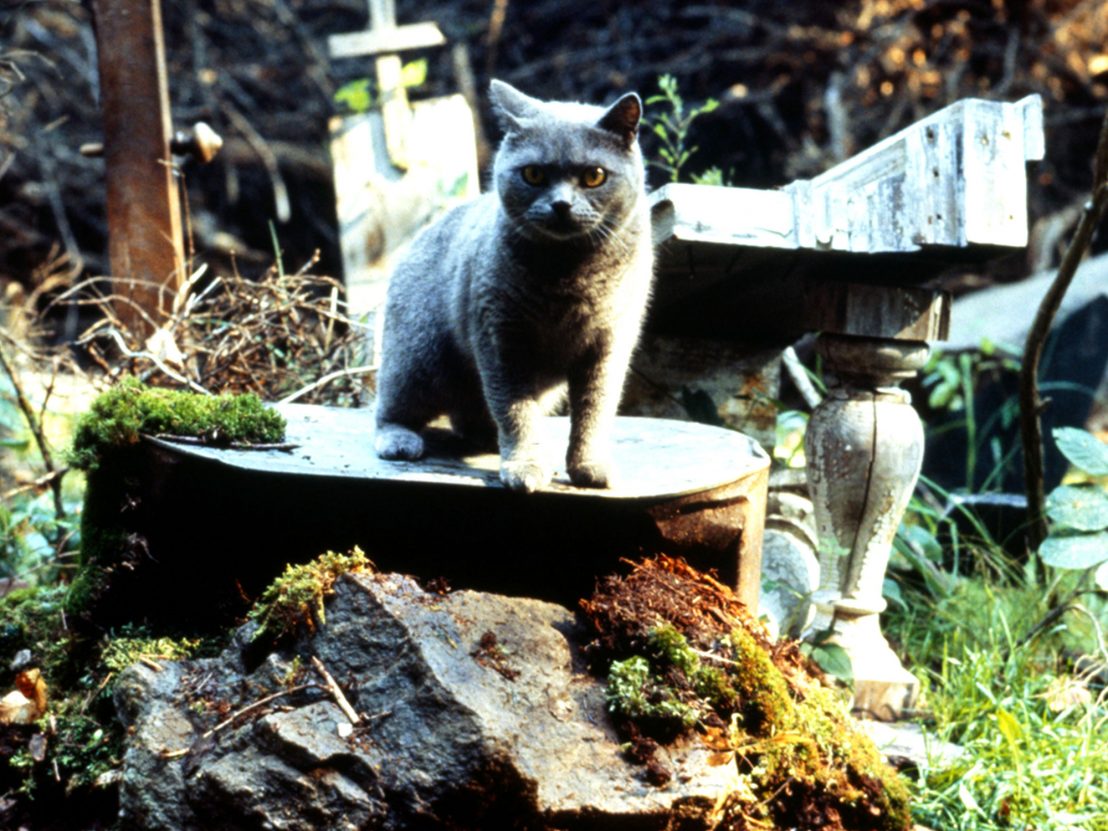
With an exhaustive season at the BFI Southbank in full swing, two major Hollywood movies on cinematic release in the form of IT and The Dark Tower, a TV version of ‘The Mist’ and detective novel ‘Mr Mercedes’ still both airing and at least two new films on the way, it is safe to say that Stephen King fever is in the air. There is obviously something innately cinematic and primal in King’s work as a writer across both horror and sentimental Americana, and adaptations large and small have been ubiquitous in American cinema over the past four decades.
With this in mind, Elena Lazic, Manuela Lazic and Paul Ridd have conducted a full survey of cinematic King iterations, ranking by quality and faith to the writer’s spirit in order to get some sense of the enormous wealth of Stephen King content available on film. Various TV adaptations – some iconic (the miniseries of IT and The Stand for instance), some less so – are also worth seeking out, as are King’s contributions to shows like The Twilight Zone. But for the purposes of this list, we’ve stuck to feature film versions released theatrically, excluding DTV films, sequels and spin-offs unrelated to the author’s work. Enjoy.
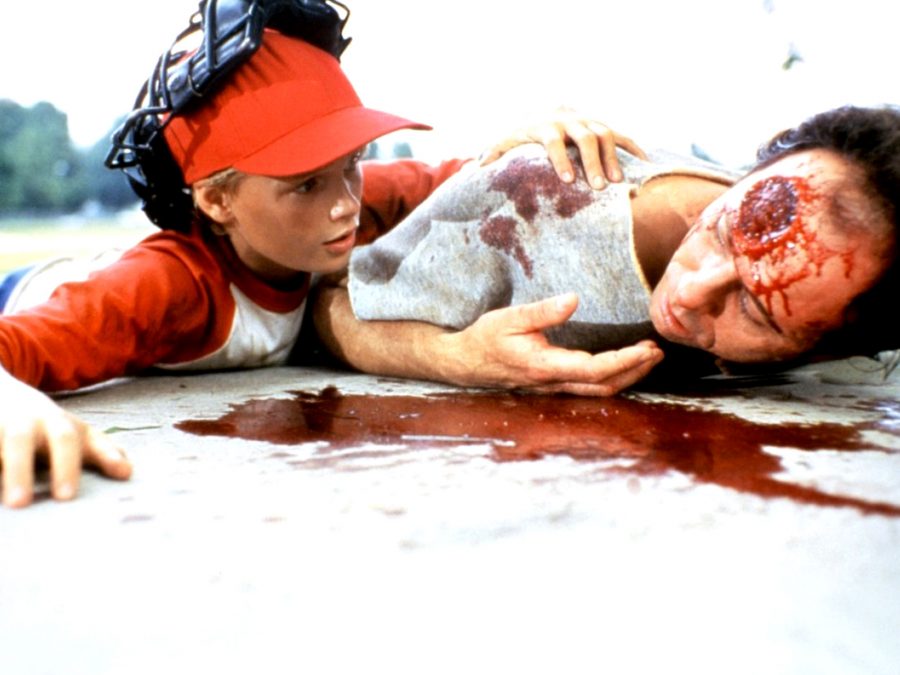
Stephen King’s first directorial effort has so far remained his last, and there is no mystery why. Made while the author/director was admittedly high on cocaine the entire time, Maximum Overdrive restores all the author’s affection for weird colloquialisms but none of his talent for terror or thrill. Yet things starts pretty well, as machines of all kind start to act on their own and violently kill people, even children. Problems begin when, for no good reason, the film morphs into a sort of bad Christine, where big autonomous trucks start attacking a random group of people secluded at a gas station. Excruciatingly uneventful and slow, focused on completely unlikeable characters, and an absolute waste of Emilio Estevez’s talent, King’s audiovisual creation barely qualifies as a movie, and is far from an enjoyable ride. Elena Lazic
Do not be deceived by its enticing title: Graveyard Shift is one of the most grating King adaptations there is. At an old-fashioned cotton mill, an employee is found dead in what looks like a particularly gruesome accident. Wasting no time in grieving or in investigating into the circumstances surrounding this graphic death, the ruthless boss of the mill immediately hires a new employee to rid his mill of a serious rat infestation. The presence of the unwelcome rodents puts everyone on edge, and Graveyard Shift is one of those King adaptations where the characters spend most of their time shouting at each other or spurting out weird exclamatives that are never used outside of King’s writing. The film’s few scares and gory moments fail to compensate for the fact that the story really isn’t about anything other than a big monster living in the basement. EL
The few stories that King wrote under the pseudonym Richard Bachman are arguably more violent and cynical than his other work, and science fiction novel The Running Man is one of them. Paul Michael Glaser’s film adaptation however turns what was a potent critique of America’s thirst for violent entertainment, into an Arnold Schwarzenegger vehicle of the most mindless and silly kind. Schwarzenegger plays a wrongly convicted criminal coerced to participate in ‘The Running Man’, a Hunger Games-type TV show where players must escape real death. Initially a satire of a totalitarian 2025 America, the film is little more than a gung-ho catastrophe that relishes violence rather than condemn it at all, coming closer to the ridiculous nonsense of the Rollerball remake than it does to the slick intelligence of Total Recall. EL
When a film begins with shots on the yellow lines of a dark road very similar to the iconic opening sequence from David Lynch’s Lost Highway, one better start bracing for impact. Arguably not one of King’s best stories, Dolan’s Cadillac makes for a painfully tedious and offensive film. After his wife Elizabeth witnesses a violent meeting between prostitute traffickers, Robinson (Wes Bentley) tries to protect her from possible revenge from Dolan (Christian Slater). Now hiding in a hotel under FBI protection, the couple keeps trying to have a baby and each intercourse is mercilessly shown on screen. Meanwhile, Slater shouts ideas about racism and the American dream to no one in particular. When Elizabeth is eventually killed, Wes Bentley – possibly the actor with the smallest range of all the people working in Hollywood today – tries to show his anger by screaming. He eventually gets his revenge when he manages to drive Dolan’s car into a hole, and after more screaming, buries him alive. Manuela Lazic
At the time of this publication, India had produced two adaptations of King’s work. Almost 10 years after Woh, the Indian version of IT, Anurag Kashyap directed a 128-minute movie inspired by King’s short story ‘Quitters, Inc.’ Both the original material and the American horror segment from portmanteau horror Cat’s Eye relied on the brevity of the story to make its deeply cynical conceit work. Kashyap (later of Gangs of Wasseypur fame) extends the same story into an excruciatingly long film that is just as cynical but never funny. A contrived ending tries very hard to turn the basic concept – torturing your loved ones to make you quit smoking – into something more profound about bodies and souls. It just doesn’t work. EL
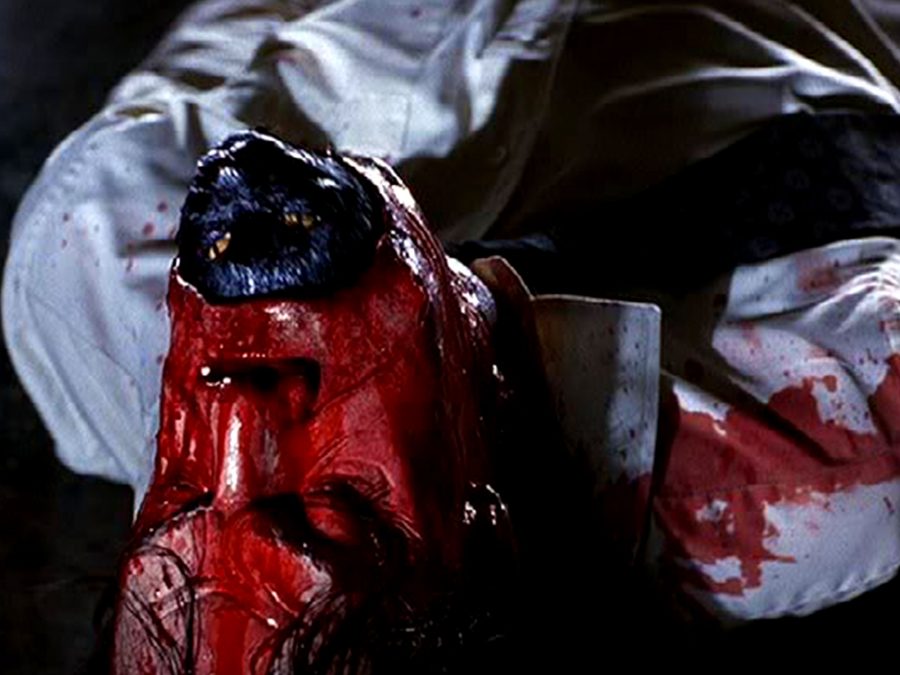
Anthology horror movies are often an opportunity for farfetched and conceptually simple stories to make their way to the screen. ‘The Cat from Hell’ is the final segment in TFTDS and fails to save the film despite its rather amusing gory moments. A headhunter is hired by an old man to exterminate the cat that has been killing all the elderly residents in the man’s gothic mansion, one after the other. The charismatic New York Dolls frontman David Johansen runs after and exclaims witty remarks at the mischievous cat, until the animal reveals his more bestial side in a truly disgusting and insanely ludicrous attack. Ultimately, this is nothing more than a game of cat and mouse. ML
Despite the star wattage of leads John Cusack and Samuel L Jackson, this much-delayed big screen adaptation of King’s epic 2006 novel suffers from the obvious compromises involved in its creation. Originally pitched as a big budget studio project with Eli Roth attached to direct, Tod Williams’ film lacks the budget, special effects or artistry needed to render its depiction of a worldwide apocalypse convincing or interesting. The film fails to deliver on its unnerving opening, in which a deadly pulse emitted from cellphones transforms a busy airport into chaos, its occupants turned into murderous zombies. Lacklustre acting, a plodding road movie narrative and a final, woeful pay-off compound the sense of disappointment. The film is memorable mostly for one extraordinary and transcendent use of the Trololol song. Paul Ridd
An exercise in exactly how not to condense the narrative and thematic complexities of an overlong and unwieldy novel, Lawrence Kasdan’s 2002 film Dreamcatcher positively reeks of studio interference and compromise. After an effective opening act in which a group of boisterous male friends convene in a mountain cottage to hunt deer, the film swiftly becomes incoherent once a deadly, faecal monster is introduced, government agents appear on the scene and a shared secret from the men’s childhood is revealed. Messy, noisy and often completely incomprehensible, the film has some moments of real terror, but is too often too lost in its multiple narratives to be anything other than an interesting folly from a talented director. PR
Perhaps the most telling factoid about this 1992 film and its 1996 sequel Lawnmower Man 2: Beyond Cyberspace is that Stephen King fought to have his name removed from all publicity materials. A mess of early CGI, noisy silliness and bizarre science fiction musings, both films leave narrative logic and effective atmosphere at the door, with their camp pleasures very much a matter of diminishing returns across their mercifully brief runtimes. PR
Among all the theatrically released King adaptations, Riding the Bullet is the one that comes the closest to a 2000s teen movie. The film follows Alan Parker (Jonathan Jackson) a university student and artist who feels misunderstood by everyone, even though that is obviously not true. Hitchhiking one night to get to the hospital where his mother (Barbara Hershey) has just been admitted, his encounters with several creepy individuals – including a decomposing David Arquette – gradually reveal the nature of the trauma behind his perpetual death wish: the death of his father. Director Mick Garris was also behind the King-approved TV adaptation of The Shining, and he definitely has a real understanding of the emotionality of King’s work. Riding the Bullet is well-made, and the relocation to the late 1960s allows for a delicious critique of hippie culture. Yet with every single narrative event given with the same level of intensity – way up to 11 – the film eventually grows tiring and never truly lifts off. EL

Combining both King’s concerns for the writerly life and the cheating wife, Secret Window stars Johnny Depp as Mort, a writer who retires to his country house after surprising his wife sleeping with another man. Out of nowhere comes another writer, Shooter (John Turturro), who claims that Depp stole one of his stories. With increasing violence, Shooter eliminates every one who could corroborate Mort’s claim that he wrote the story first. Depp’s characteristically twitchy performance makes sense at first, when the disillusioned Mort suffers from writer’s block and cannot be bothered to care about anything, wearing the same old robe every day. It becomes an issue once the extreme violence starts, as Mort still doesn’t seem to care very much. Because of Depp’s detached performance and a rushed third act that seems cruelly indifferent to the horror of the murders, the gruesome ending does not feel like the shocking reveal the film was building up to, but rather like a gratuitous and unpleasant fuck you. EL
Reviled by King himself, Mark L Lester’s 1985 film suffers in the ‘what might have been?’ stakes since John Carpenter was originally signed up to make the film with Burt Lancaster in a key role. As it is, the film has its qualities, most memorably an early, intense performance from Drew Barrymore as a young girl with psycho-kinetic abilities, and a terrific score from Tangerine Dream. Though later bogged down in the complexities of a government conspiracy led by the mysterious Captain Hollister (another excellent King role for Martin Sheen), the film’s early scenes have a hypnotic quality, jumping through time to set up the story with a clarity and elegance absent from King’s often clunky prose. A genuinely awful sequel, Firestarter 2: Rekindled, went straight to video in 2002 and is memorable mainly for performances from screen icons Dennis Hopper and Malcolm Macdowell, both looking thoroughly embarrassed throughout. PR
An attempt to cram a world created over eight books into one 90-minute movie, The Dark Tower is flat and forgettable when it should be epic and exhilarating. Unlike most King works, this is an adventure fantasy epic that is for the most part not set in our real world, yet the premise – a young boy in a dysfunctional family who dreams of a violent fantasy world – is as King as it gets. Still, few of the author’s usual concerns and obsessions are present in Nikolaj Arcel’s adaptation, which follows a simple A-to-B narrative with random bits of worldbuilding thrown in. The presence of Idris Elba and Matthew McConaughey, both usually so over-the-top, should at least guarantee some laughs, but the film manages to even make these idiosyncratic actors uncharacteristically flat and uninteresting. EL
What made King’s novel – and, to some degree, Mary Lambert’s 1989 adaptation – so thrilling and sad was the sense that, although the eponymous cemetery does indeed have a morbid pull on people, the Creed family at the centre of the story was heading for doom from the start. Knowing the personalities and hang-ups of both the father Louis Creed and his wife Rachel was instrumental in understanding why she was so afraid of death, and why he was so eager to escape it. However, the 2019 adaptation is more interested in the gore and jump-scare potential of King’s concept than in its emotional power or in its appeal to our fear of losing our loved ones. This approach could have made a kind of sense within a satirical, over-the-top treatment of the source material, but the choice of an extremely serious tone hits the final nail in the coffin. The soil of a fan’s heart is stonier. EL
Since Brian DePalma’s sublime 1976 original, an underrated direct-to-TV sequel The Rage: Carrie 2 as well as an ill-fated 2002 TV movie adaptation have both attempted to bring new insights to King’s primal story of teen shame, repressed violence and pubescent horror. Boys Don’t Cry director Kimberly Peirce’s 2013 remake suffers from restraint in comparison to these three other films, being neither shocking or violent enough to do justice to its talented cast and impressive cinematography. Chloë Grace Moretz is miscast in the title role, being too wholesome to shake off the memory of Sissy Spacek’s tremendous original performance. Julianne Moore, chewing the scenery in all of her too brief screen time, is wasted in the role of Carrie’s monstrous mother. PR
The usually quiet small town of Tarker’s Mills is shaken by a series of gruesome murders, as a nasty werewolf seems obsessed with ridding the small town off any ‘weak’ individuals: whether they are are alcoholics, suicidal, or simply lazy, the victims all die for their sins in horrible circumstances. When young paraplegic boy Marty (Corey Haim) starts putting the pieces together, he and his older sister seek the help of the only adult crazy enough to believe them, Uncle Red (Gary Busey), himself a jobless alcoholic. King would pull off his love letter to ‘losers’ much more convincingly with IT, published just a few years after the novella Silver Bullet is based on, and this may account for some of the film’s weaknesses. Although Busey’s committed performance gives it a little boost, the film feels rather phoned in and the various elements of the story never gel into a truly coherent and meaningful narrative. EL

Considering King’s love for the sensational, the upsetting and the obsessive, it is only natural that some of his stories would feature serial killers of the human, non-supernatural kind. In A Good Marriage, a seemingly happy couple with a beautiful house, fully grown kids, and a very comfortable life, go through a bit of a rough patch when Darcy (Joan Allen) finds out that her husband Bob (Anthony LaPaglia) is a wanted serial killer. A vicious power play ensues, with Darcy’s emotions ranging from guilt to disgust, rage to fear, as she tries to save both her life and her marriage. Allen and LaPaglia deliver convincing performances, yet a too quiet and restrained directing dampens the nail-bitingly tense and emotional story of a woman on the verge of a nervous breakdown. EL
It is perhaps harsh to contrast the two films, but Scott Hicks’ short story adaptation Hearts in Atlantis owes such an evident debt to Rob Reiner’s Stand by Me in its mood, look and thematic preoccupations that the comparison is inevitable. Visually stunning, well acted, but altogether too silly and far-fetched to really resonate, the film lacks the emotional heft, enormous sense of personal loss or sense of time from Reiner’s film, and for a film so preoccupied with its central character’s inability to forget or escape the past, it fades into memory all too quickly. A syrupy confection. PR
King’s morbid fascination for the weakness behind the facade of domestic bliss in the American nuclear family is practically a constant throughout his oeuvre. Only the supernatural comes close to rivalling this obsession, and both combine perfectly in the figure of Cujo, a usually cuddly St Bernard turned evil after a nasty bat bite on the nose. In wonderful Stephen King fashion, the association of this breed of protective dog with the ideal American family is made hysterically, frighteningly overt when Cujo attacks a cheating woman and her son. Stuck in her car with her little boy, trying to survive the summer heat and escape from Cujo, this woman is symbolically given a chance to remember the value of family and to prove her worth as a mother. Despite a delightfully bonkers premise and a great lead performance by Dee Wallace, Cujo is ultimately predictable and monotonous. EL
King’s predilection for antiheroes often means that film adaptations of his work give centre stage to usually discreet character actors. Even if the plot isn’t the most thrilling, the Miguel Ferrers and Ted Levines of this world get to flex more of their acting muscles at last – and often end up saving the silly movie from complete oblivion. The Mangler is as dumb as it sounds: a machine in a laundry factory starts killing employees and the Devil is somehow involved. As the world-weary and crude police officer typical of King’s work, Ted Levine displays a captivating talent that is concealed in better films such as The Silence of the Lambs, where he only played small and limited parts. Being able to throw holy water and recite Bible verses at an evil tumble dryer with conviction surely is the mark of a great actor. ML
Bringing Stephen King’s trademark meeting of the mundane and the gothic to the cinema screen has proven a difficult feat to pull off. While there are no bloodthirsty washing machines in The Night Flier, the vampiresque killer does ride a plane to somehow make up for his lack of levitating powers. More worrying yet is how the twist is made evident right at the start: the film’s hero, Miguel Ferrer’s nihilistic reporter of the supernatural, is the only other human character driving a plane too. Through the needlessly confusing detours of this gross and grotesque story, Ferrer hams it up perfectly, giving every swear word and groan the impact that nothing else in the film can provide. Given a chance to finally be a leading man, he turns the film and its amalgam of absurd scenes into a showreel for his acting talents. ML
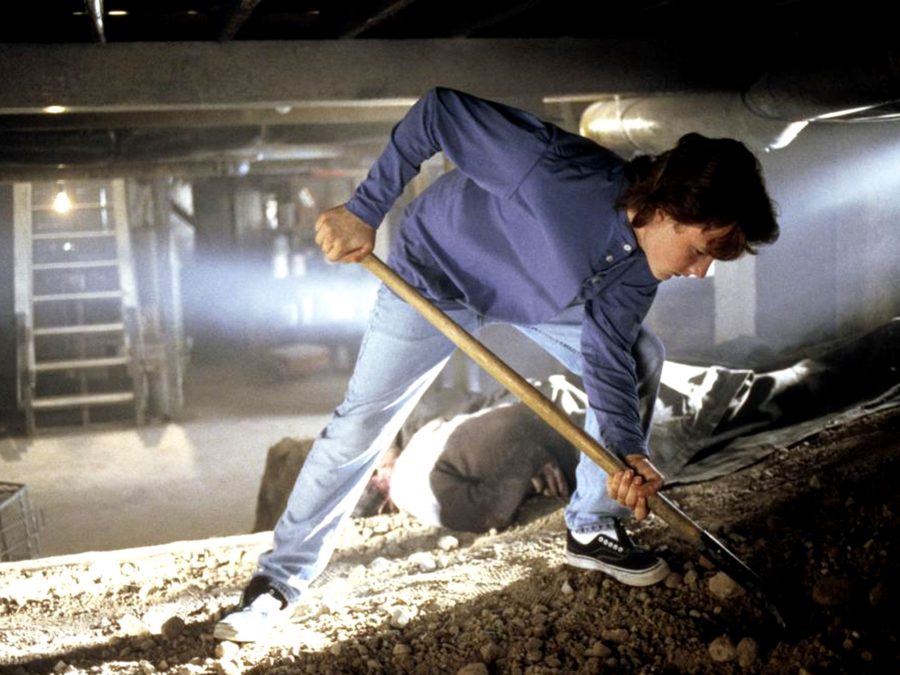
Following the success of The Usual Suspects, it’s hard to imagine Bryan Singer intended his sophomore feature as a glorious example of high camp. On paper, the story of a young student’s cat and mouse games with an elderly ex-Nazi in a quiet American suburb may have seemed like the stuff of awards, particularly with a towering Ian McKellen in the lead. However, the tone of the film is so heightened, its melodramatic plotting so hard to take seriously and its homoerotic overtones played so brazenly, that the film quickly descends into abject silliness and is best enjoyed as a magnificent exercise in failed sincerity, rather than a serious work of maudlin melodramatic fiction. PR
Released as both a two-part TV mini-series and a truncated theatrical feature in 1979, Tobe Hooper’s atmospheric Salem’s Lot features an uncharacteristically convincing David Soul as a popular novelist embroiled in a small town conspiracy involving the contents of a mysterious coffin and an ancient vampiric spirit. With a starry cast, including Elisha Cook Jr, James Mason and a never-better George Dzundza, Hooper’s film coherently draws together its various convoluted narrative strands, setting the central supernatural mystery against the backdrop of petty disputes within a fundamentally rotten New England community. Sometimes plodding, Salem’s Lot is nevertheless an adroit chiller, earning its three hour plus runtime with some genuinely terrifying moments and a thoroughly satisfying pay-off. Though lacking the visual ingenuity or experimentation of Hooper’s most famous film The Texas Chain Saw Massacre, Salem’s Lot delivers a dutifully effective rendering of King’s story. A lesser 2004 TV adaptation fades into memory far faster than Hooper’s juicy chiller while a god-awful TV sequel followed in 1987. Having little to do with either King’s writing or logic itself, A Return to Salem’s Lot is for completists and masochists only. PR
Known as King’s most personal novel, It follows a groups of friends all united by their unpopularity – they are ‘losers.’ When his younger brother suddenly disappears, 13 year old Bill (Jaeden Lieberher) is determined to investigate and unveil what really happened. His friends all agree to help after they start experiencing vivid hallucinations, where a terrifying supernatural clown shows them their worst fears realised. The key to overpowering the monster is realising that it isn’t real, and IT is a moving story about how the support and affection of friends can help one overcome trauma – the long-term anguish about something that only persists in the person’s mind, something that isn’t real anymore. This story had already been adapted into a mini-series in 1990, but in some ways, this new adaptation is more faithful to the source material: we see a lot more of the monster, and it’s methods are much more detailed. Yet at the same time, this new film is too concerned with being level-headed and realistic, to properly restore the sense of irrational, overwhelming and primal fear that is at the core of the story and which constitutes the true basis of identity for each of the characters. EL
With a screenplay and original scenario from Stephen King, regular King collaborator Mick Garris’ 1992 film sticks in the mind long after its conventionally melodramatic and violent finale, because its opening hour is so sexually bizarre and tonally berserk. Centring on the incestuous coupling of mother and son vampires (played sensationally by Alice Krige and Brian Krause) the film features a very young Madchen Amick as a horny teen caught up in the machinations of this ancient evil. It’s all silliness of course, but the sexual overtones, bizarrely erotic sex scenes and memorably haunting score all contribute to the deliciousness of this gloriously strange oddity. Weirdly sad, always ridiculous and effectively nasty, Sleepwalkers is perhaps the least remembered King film most worthy of re-appraisal, if nothing else because it features some of the most powerful cat acting committed to film. PR
King’s problematic representation of racial minorities in his novels is inescapable and unforgivable. Perhaps a small consolation is the way that these minorities, always shown as scary and foreign, are however always right. In King’s stories, their existence always serves to highlight the cruelty and arrogance of the tolerated white American male, and perhaps no other King protagonist is more unsympathetic than the main character of Thinner. A content, obese lawyer and family man gliding through life without any concerns whatsoever, Billy (Robert John Burke) is cursed by a traveller after he accidentally kills his daughter. Billy immediately starts losing weight at incredible speed to the point of illness, and, as white men have done for centuries, sets about exterminating the family of the old traveller to force him to lift the curse. As much as there is pleasure in seeing the world of white men crumble, these characters are almost too unpleasant to bear, and the bitter film leaves a sour aftertaste. EL
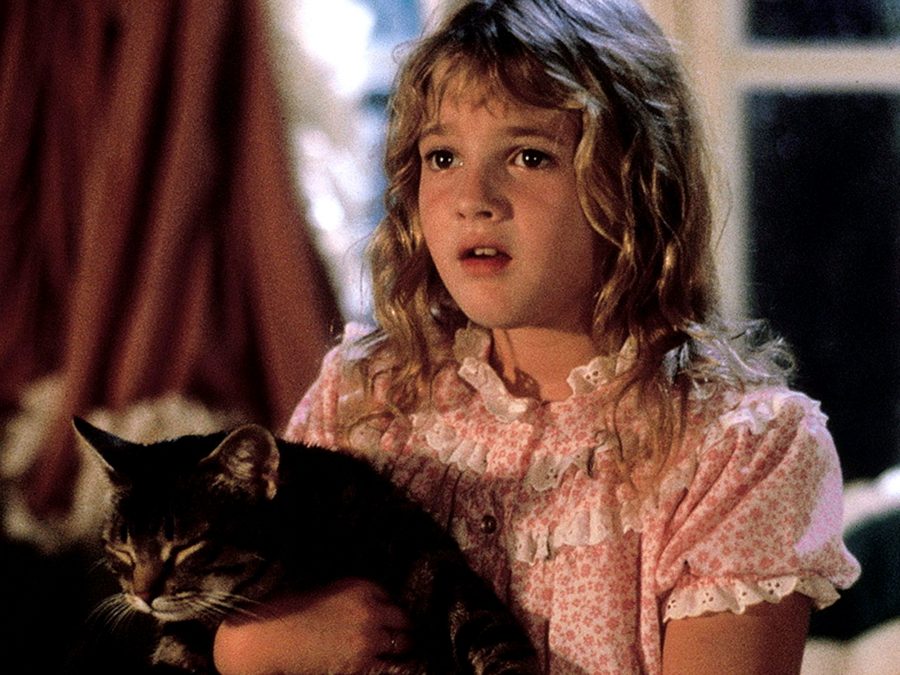
As the title suggests, the link between the three tales of this anthology horror film is a travelling cat, a mere witness to the first two stories who becomes a real hero in the third. In the first short, James Woods plays a smoker seeking the help of specialised clinic ‘Quitters, Inc.’ King being King, this banal situation soon takes on mind-numbing importance, questioning the solidity of the American nuclear family itself: any missteps from Morrison and increasingly gruesome consequences befall his wife and child. A little repetitive but just as gloriously sadistic, the second story sees an old man force his wife’s young lover to walk the slim ledge around the high building where he lives. The film peaks with the last story, where the cat finds himself in a fight to the death with an evil troll bent on slicing the throat of a young Drew Barrymore. Featuring gloriously dated special effects and some of the most impressive cat acting ever put to screen, it’s a joyful and serene ending to an otherwise wonderfully disturbed collection of stories. EL
Spawning no fewer than nine sequels, Fritz Kiersch’s 1984 adaptation is notable mainly for its simplicity and straightforwardness, belying the expansive intricacies of lore in the franchise that would follow. A brief, bloody prelude introduces us to a town in which the entire adult population has been brutally murdered and a ‘Lord of the Flies’-style community of children rules. The kids are led by a pair of demonic teen boys, Isaac (an unforgettable John Franklin) and Malachai (Courtney Gains), but the community is far from stable: when a bickering couple arrive in town and are menaced by the kids, things escalate violently, culminating in a melodramatic showdown in which a demonic presence is summoned and fought in the cornfields. A suitably tense and unrelenting chase movie, the film is memorable for an early pre-Terminator turn from Linda Hamilton as well as some genuinely unnerving child performances. It’s high trash nevertheless. PR
King’s second collaboration with iconic horror director George A. Romero plays beautifully with the writer’s autobiography in its depiction of a popular novelist who writes more violent, sensational material under a pseudonym. King and his alternative persona Richard Bachman (responsible for schlockier novels like The Running Man) here find fictional proxies in the form of novelist Thad Beaumont (Timothy Hutton), tormented by his violent alter ego George Stark, a leather-clad creep who begins violently murdering various of the writer’s associates. A homage to giallo and pulp fiction, the film is a stylish exercise in schlock, culminating in a brilliantly ludicrous showdown, despite some particularly ropey special effects. PR
Driven by a haunting central performance from Christopher Walken, David Cronenberg’s unnerving 1985 King adaptation is a masterclass in tension and style which manages to avoid exposing the more far-fetched elements of the novel. Following a horrific accident, Johnny Smith (Walken) finds new psychic abilities allow him to see into the past and future of any individual he comes into physical contact with. The episodic narrative that follows, in which Johnny explores his gifts, investigating incidents of escalating significance, is really just a vehicle for Cronenberg to mine his fascination with bodily horror, with a deadpan approach to violence that occasionally erupts into spectacle. Standout moments are a fittingly horrendous suicide scene and a memorable climax in which a corrupt politician is exposed and shamed as a coward. Terrific editing, tremendously atmospheric cinematography and Michael Kamen’s great score all contribute to making this one of the most effectively cinematic King adaptations – one, furthermore, in which the thematic preoccupations of the filmmaker meet their match in gloriously dotty source material. PR
More of the same schtick, only darker, bloodier and more scary seems to have been the philosophy behind this underrated sequel. With Michael Gornick replacing Romero as director, the film presents three new stories written by King and drawn from the pages of the fictional Creepshow mag. The highlight is ‘The Raft’, a grotesquely effective allegory for teen sex and disease, in which a quartet of horny teens find themselves stranded on a lake plagued by toxic waste. However, there is fun to be had in all of the stories, and the film bombs along with the same ghoulish fun and puerile humour as the first instalment. A second sequel went straight to video in 2007 but has nothing to do with King’s writing and is best avoided. PR
King earned his first screenwriting credit collaborating on this brilliantly dark and funny portmanteau film from director George A Romero. An homage to pulp horror magazines of the 1950s, the film consists of five vignettes drawn from the pages of the fictional ‘Creepshow’ magazine. A delightful framing device in which garishly illustrated panels from the mag burst into life sets the macabre tone for this exercise in fun and reverential horror. This is the rare portmanteau film in which every segment shines, with no weaker segments or longeurs. The standouts are the horrible story of a spurned husband who plans an elaborate revenge, in ‘Something To Tide You Over’, and the darkly comic story of a family haunting in ‘Father’s Day’. The former is particularly memorable for featuring comic actors Leslie Nielsen and Ted Danson in dramatic roles played dead straight. Also look out for King himself in a colourful cameo as a man cursed with a disgusting bodily affliction. The film is a joy throughout, to be treasured above all the silliest, most fun-oriented of King adaptations. PR
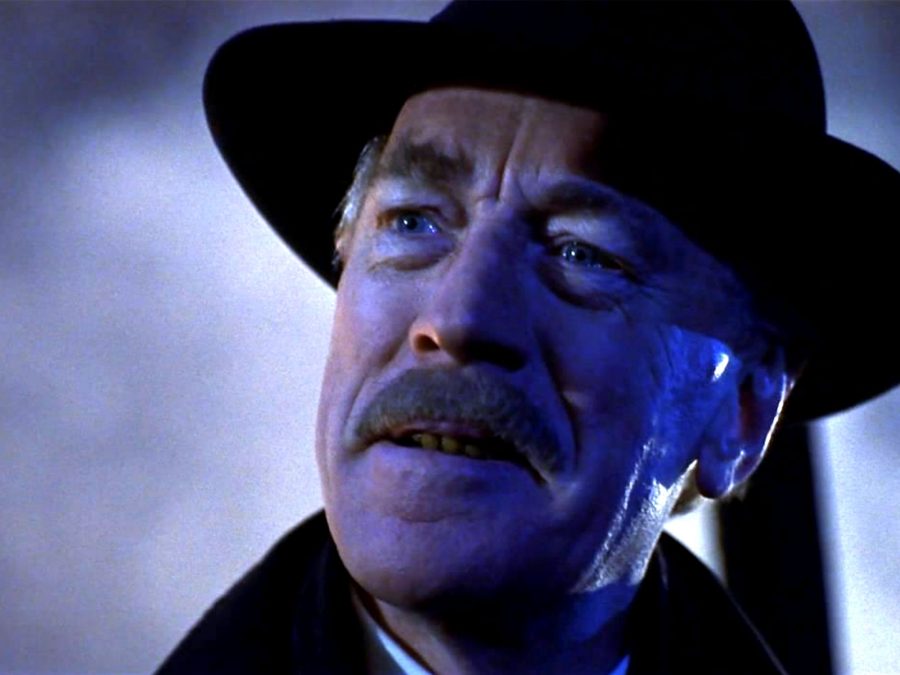
One of the most effectively unpleasant King adaptations, this 1993 offering features a blistering turn from Max Von Sydow as Leland Gaunt, the devilish proprietor of a small town antiques store who offers customers the realisation of their wildest dreams in return for loyalty and violent favours. Responsible for the total breakdown of community in the peaceful town of Castle Rock, Gaunt gleefully watches as residents turn against one another, chaos reigns and petty disputes turn murderous. With little in the way of humanity and a nastily nihilistic streak, the film is so unrelentingly bleak as to be at times almost unwatchable. An effective, if unenjoyable allegory for small town American life, Needful Things is for completists only. PR
The second of three cinematic King adaptations from Frank Darabont, The Green Mile is by far the weakest of the director’s efforts, too often falling into bathos, treacly sentimentality and overlong extrapolation of its central conceit. Ostensibly a vignette from the life of jaded prison warden Paul Edgecomb (Tom Hanks) who bonds with mysterious, possibly magical prisoner John Coffey (Michael Clarke Duncan), the film’s ugly combination of brutal prison realism and high sentimentality is a tough pill to swallow, even despite the best efforts of Thomas Newman’s magnificent score. PR
Pushed by a profound desire for “normalcy”, King characters often find themselves committing unthinkable acts which, of course, immediately strip them of the status of regular people. In 1922, this normalcy is country living — what pushes farmer Wilfred James (Thomas Jane) to murder is the then-new threat of modern city life. He is so desperate, in fact, that he willingly destroys the family unit usually so dear to King, and kills his wife after she threatens to sell their farm. Zak Hilditch’s adaptation successfully translates King’s ability to bridge the comforting and mundane with the terrifying and unusual: every moment of violence and gore is more horrible and disgusting than the picturesque milieu would lead us to expect. Though the horrors that follow Wilfred’s deed aren’t supernatural, the atmospheric film fills us with the sense of doom that he comes to feel hanging over him at all times. A more boisterous treatment of the source material could have made for a more entertaining, sillier film, but this is one of the rare King adaptations where a serious, realistic approach actually bears fruit. EL
Recently adapted into a television series, King’s 1980 novella first appeared on screen as the third King film from director Frank Darabont. After the more sentimental, realistic aesthetic of The Shawshank Redemption and The Green Mile, this B-movie-inspired schlockfest echoes Romero’s Dawn of the Dead in its depiction of bickering townspeople holed up in a mall and awaiting death at the hands of some particularly nasty mist-dwelling creatures. Originally envisaged as a black & white film, the movie exists in both a colour and marginally preferable monochrome version. It’s all about the pay-off though, ending as it does on a note of unusually bleak and unexpected despair and irony. PR
With his unparalleled ability to remain endearing while expressing total disdain for everyone around him, it’s no wonder that John Cusack has so far starred in three King adaptations, Stand by Me, 1408 and The Cell in 2016. The second one may not be the best known, but it might well be the most fun. As Mike Enslin, yet another one of King’s onscreen writers but one who refuses to believe in the supernatural, Cusack brings his usual arrogance to room 1408, supposedly the site of strange deaths. Through some dodgy CGI and relentless editing, the room changes shape, and so do time itself and Mike’s own consciousness. The bleak and confusing narrative vaguely touches on issues of grief for emotional impact, but it’s the silly playfulness of the film and Cusack’s dedication to it that make 1408 work on its own limited terms. ML
At the beginning of Gerald’s Game, Jessie (Carla Gugino) is handcuffed to the bed frame, to her surprise, by her husband Gerald (Bruce Greenwood). When she protests, he threatens to go through with his violent fantasy whether she likes it or not before proceeding to drop dead of a heart-attack. This leaves Jessie in a humiliating position, yet King cannot be easily dismissed as a writer who takes pleasure in his characters’ suffering. Rather, his work helps us stare into the darkest parts of human nature, with laughter or with tears. Immobilised, Jessie is similarly forced to confront her fears from a position of stasis – unlike most of King’s characters, who tend to flee their problems and end up dead, or worse. What follows is a moving and thrilling exploration of trauma, and ultimately, resilience. As in the best adaptations of King, explosions of gore echo the rot of unchecked emotions just simmering under the surface of those lives; one particularly unnerving scene feels like a cathartic exorcism. EL
An extremely faithful adaptation of King’s 1983 novel, Mary Lambert’s Pet Sematary shares something of the spirit of The Dead Zone in that its soulful, straight-faced delivery of some ridiculous material pays off with a genuine sense of horror and sadness. Telling the story of a young doctor driven to extreme measures when he loses his child in a horrific road accident, the film focuses on a supernatural graveyard which allows any creature, animal or human to return from death in zombie-like form. A properly scary film with some terrific performances, it is one of the very best King films, culminating in an inappropriate but catchy title song by The Ramones. An extremely bloody and tonally quite different sequel followed in 1992, also directed by Lambert. Having little to do with King’s writing, it is nevertheless an effectively nasty slice of body horror, featuring a superb turn from a young Edward Furlong, and worth seeking out. PR
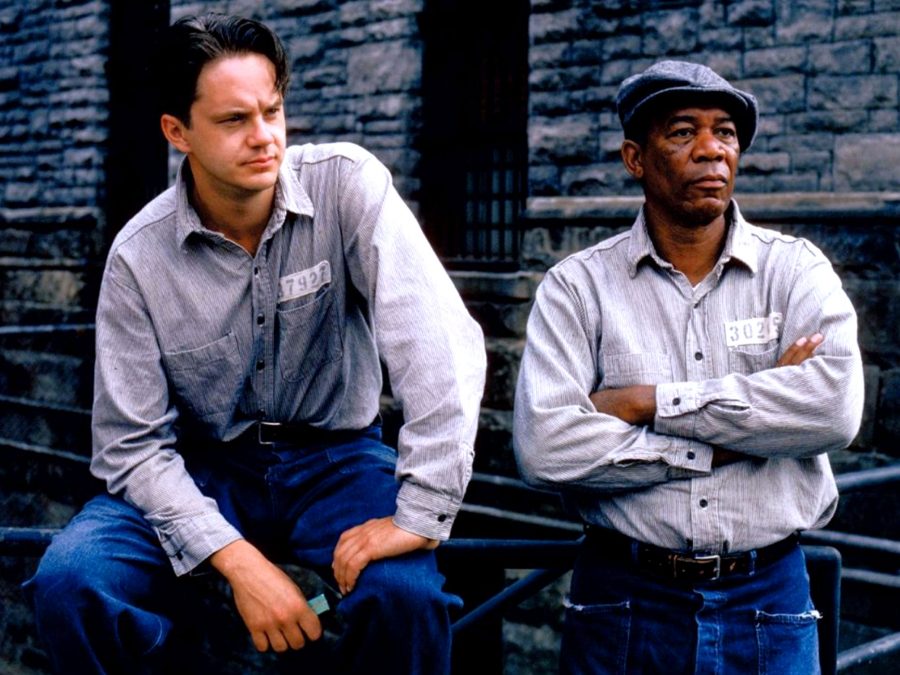
The movies really love King, so much so that one of his stories has been turned into the best movie ever made (according to IMDb users). The epic scale (several decades) as well as the ultimately uplifting message of Rita Hayworth and the Shawshank Redemption meant that the novella was perfectly suited to a ’90s Oscar-worthy Hollywood drama. Its hero, Andy Dufresne, was also a terrific part for Tim Robbins, whose subtlety and conventional yet disquieting face and figure gave the quiet educated man the captivating air of mystery he needed to carry this long story. Although devoid of supernatural or horror elements, the narrative is unmistakably King-esque in its concern with hope and its discontents, and its dynamic of good people vs bad people. Andy’s love of books and numbers make him a clear surrogate for King. As quietly as the author sets his plot in motion to then blow his reader’s mind away, Andy prepares his escape from prison meticulously and discreetly, using intelligence and patience to finally surprise his captors and free himself from their grasp. ML
Five years after playing an actual maniac in Misery, Kathy Bates returns in a much more ambiguous and realistic role as Dolores, a maid accused of brutally murdering her rich boss. On this occasion, she reunites with her daughter Selena (Jennifer Jason Leigh), a successful journalist suffering from depression and who hasn’t spoken to her mother in years, believing she is responsible for her father’s death. As Dolores tries to clear her name, a much more mundane and depressingly banal story of abuse emerges, much to the anger of Selena who would rather never hear the horrible truth. A poignant story of women helping each other in a world that does everything to turn them against one another, Dolores Claiborne is King’s definitive feminist text in a body of work that has always criticised the profound misogyny of American society. Hackford’s adaptation treats the inner lives of these women with heartbreaking sincerity and overwhelming intensity: the shots of a distressed Dolores under a total solar eclipse can never be forgotten. EL
Misery is one of the few King adaptations which takes the time to fully restore to the characters’ emotions the aggrandised scale they have in King’s novels. Indeed, King often holds the emotional reality of his characters in obsessive, claustrophobic close-ups, highlighting their obsessions and potential for madness even as they might seem perfectly quiet on the outside. In Misery, James Caan plays Paul Sheldon, a novelist who – like King – has made a career of writing about obsessive and emotional characters, but here within cheap romance novels. When he is taken prisoner in the house of superfan Annie Wilkes (Kathy Bates, who won a well-deserved Oscar for her performance), he is in a way getting his due for manipulating the emotions of his readers for years: he has created a monster. The irony and humour of the situation is not lost neither on him nor on director Rob Reiner, and Misery is one of the funniest and most entertaining King adaptations there is. EL
One of King’s trademark qualities is how he writes teenage characters with chilling realism, never sugarcoating the pain and cruelty they face when growing up. Arnie (Keith Gordon) is a nerdy teenager bullied at school, but his plight doesn’t make him an angel: in Christine, everyone is bad. This toxic atmosphere, rendered with bleak sharpness by Carpenter, makes the sudden intrusion of the supernatural not jarring, but instead perfectly compatible with Arnie’s anger: his bullies and Christine, the mysterious ‘living’ car he finds to accomplish his revenge, are both equally terrifying. Having such a master of film style as Carpenter to direct not only a King adaptation, but this story in particular, is one of the greatest things to have happened to American cinema. Carpenter’s filmmaking at once compels the audience to feel Arnie’s fascination for Christine’s beauty, and to be terrified by it. His camera turns the vehicle into a truly erotic being that communicates with its owner only with its movements, like an idealised silent woman. Even when the car gets him the respect and popularity he had always craved, however, Arnie remains the same terrified boy struggling with his identity. Perhaps it is the car, as symbol of teenage sexual anxiety, that owns Arnie, and not the other way around. ML
As with The Shining, Rob Reiner’s Stand by Me is difficult to appraise afresh because its iconography, performances and mood are so ingrained in popular culture and have been so influential on American coming of age cinema. The film’s imagery carries with it a quasi-mythic weight, rendering it difficult to approach on its own terms. Watch any US movie about kids growing up and learning about the world, and the film is bound to be echoed in some way. Most other filmmakers can only hope to capture its achingly realistic evocation of community between young boys, lush cinematography, exquisite feel for landscape and perfectly melancholic score and use of pop songs. As it is, the film perfectly captures a mood of melancholia and sadness about lost youth. It is one of the greatest American films, let alone the best King adaptations. PR
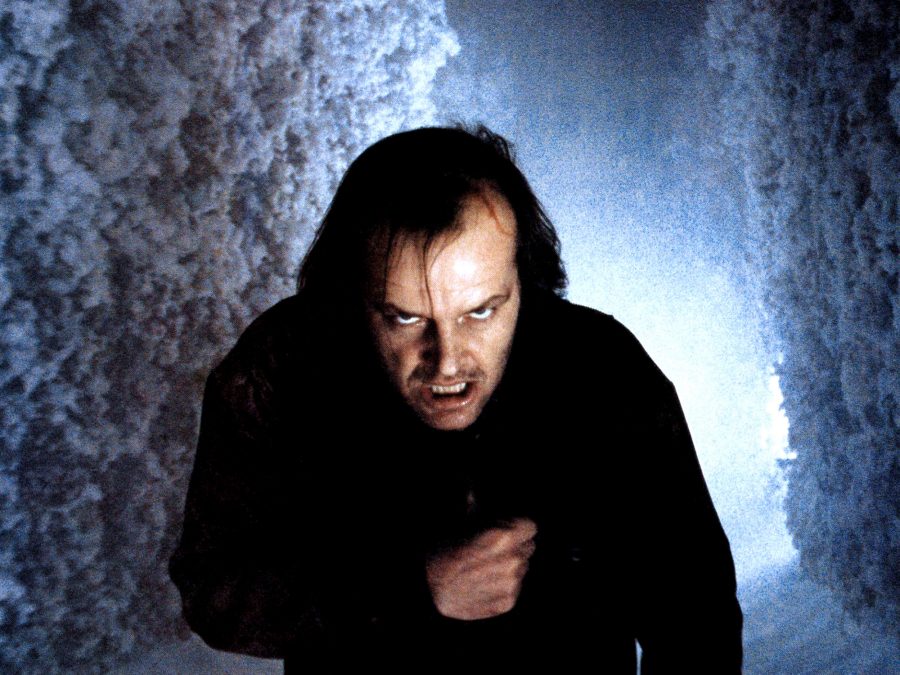
Stephen King disliked Stanley Kubrick’s adaptation of his 1977 novel to such an extent that he oversaw a lengthier and far more exhaustive TV adaptation in 1997, a five-hour ordeal which sadly maintains none of Kubrick’s power to shock. Kubrick’s surreal imagery, elaborate Steadicam shots and borderline psychotic performances are gone, replaced by a more rigidly faithful adherence to the supernatural preoccupations and wackier interludes of the novel. Part of King’s objections to Kubrick’s film stem from Jack Nicholson’s unnerving and terrifying performance throughout. From the opening moments it is clear that hotel caretaker Jack Torrance is a sick man. The tense pleasure of the film lies in waiting for him to explode into violence.
In King’s novel, the Overlook hotel has a malevolent quality entirely its own: it’s a manifestation of temptation and mental torture that pushes Jack and his family towards insanity. For Kubrick however, the cavernous interiors and red corridors of the Overlook appear more as an extension of character, a representation of Jack’s broken psyche. Decent men torn apart by tragedy or supernatural temptation are a recurring motif in King’s work, so to be presented with a protagonist already broken internally feels strange. Of course Kubrick’s film deserves its reputation as one of the finest exercises in dread committed to screen. But in the context of forming a canon of King adaptations it surely falls short of King’s vision, being in the end entirely its own beast. PR
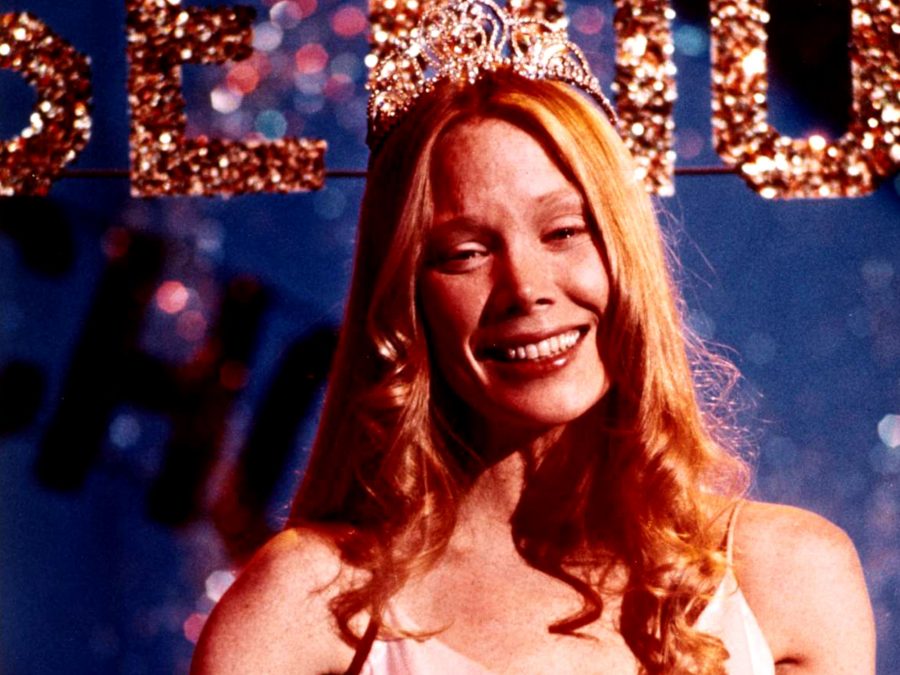
It seems inevitable that De Palma and King would work together. While King the writer tends to express overblown anxieties about more or less mundane problems through grotesquely exaggerated stories, DePalma the director employs cinematic language to evoke the visceral intensity of such fears, however absurd they may seem.
When adapting Carrie, De Palma understood that King’s far fetched story of periods paranoia needed to be translated into simple yet striking images of pure horror in order to bypass ridicule. Using visual style, performance, editing, and a gorgeous soundtrack by regular collaborator Pino Donaggio, De Palma managed to introduce Carrie’s untamed magical powers into the tacky, often amusing but cruel world of high school rivalries, with shocking vigour. Carrie’s outburst is made not only terrifying, but also heartbreaking by the fact that the director let his audience get attached to her suffering at the hands of her classmates, her mother, and her puberty, before unleashing her revenge in a wordless sequence of unforgettable bloodshed. ML
Published 9 Sep 2017
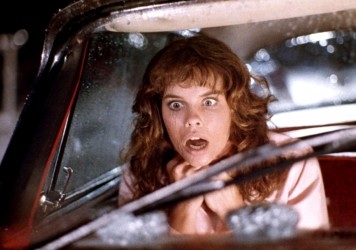
The title character in John Carpenter’s 1983 film is a memorably monstrous movie seductress.
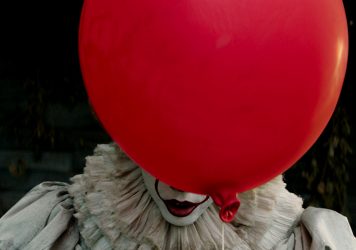
Stephen King’s iconic demonic clown gets a refresh and refit – and manages to give Tim Curry a run for his money.
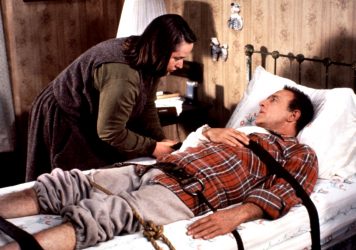
By James Morton
From Misery to The Shining, here are our favourite takes on the prolific horror writer’s work.